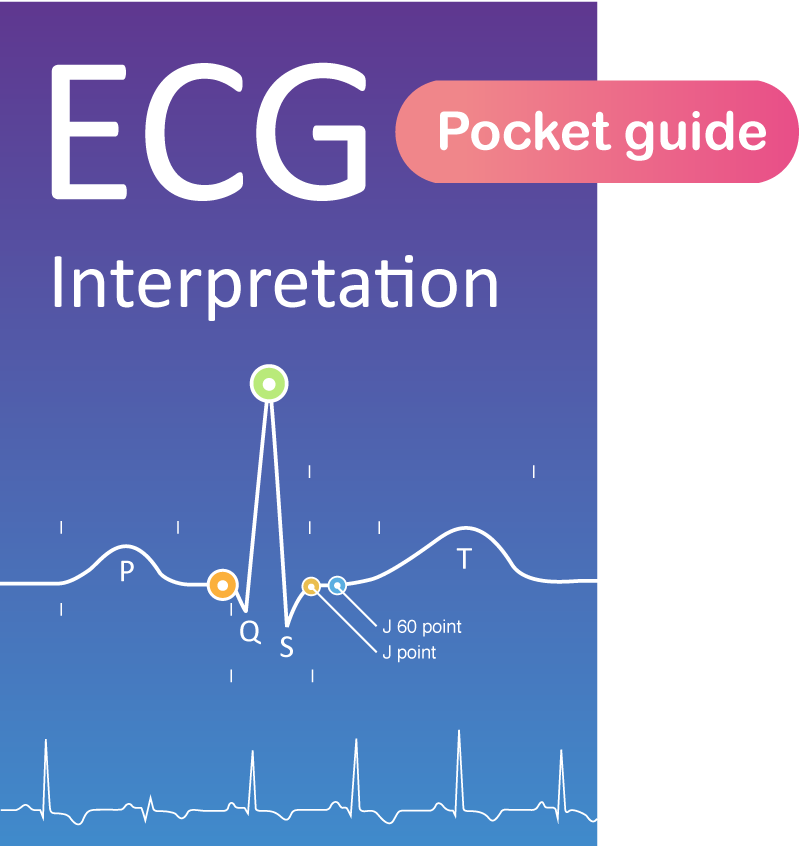Factors that modify the natural course in acute myocardial infarction (AMI)
Factors that modify infarct size and the natural course in acute myocardial infarction (AMI)
The traditional distinction between NSTE-ACS (NSTEMI, Non-STEMI) and STE-ACS (STEMI) is slightly simplified. In reality, the course in acute myocardial infarction (AMI) is modified by several factors. The most important of these, and their implications, are as follows:
- The size of the thrombus (i.e the degree of artery obstruction): The greater the obstruction the more extensive the ischemia/infarction.
- The location of the thrombus in the artery: a proximally located thrombus will cut off blood flow to more branches, and thus more myocardium, as compared with a distally located thrombus.
- The duration of the ischemia: the longer the duration of the ischemia, the more extensive the infarction.
These three are the most important determinants of infarct size. However, there are additional factors that deserve mention.
Collateral circulation: connected coronary arteries
Coronary collateral circulation may be extremely important. Collateral circulation develops in ischemic myocardium because longstanding ischemia causes the myocardium to secrete growth factors (particularly VEGF [vascular endothelial growth factor]) which stimulate nearby arteries to grow new vessels into the ischemic zone. Newly formed vessels, which may originate from other branches of the same coronary artery or another coronary artery, will alleviate the ischemia, improve myocardial function and increase resistance to episodes of more severe myocardial ischemia.
Collateral circulation may be very effective in reducing ischemia. Indeed, it may be so efficient that a total occlusion in the main artery may not lead to infarction due to the collaterals. Occasionally, patients with total and proximal occlusions may present without ST-segment elevations (which they should exhibit) due to rich collateral circulation in the ischemic area. Moreover, intensive collateral circulation may also prevent ischemia from occurring during exercise stress testing, which leads to false negative stress tests. Studies have shown that if the myocardium obtains 30% of its resting perfusion from collaterals, it may survive for 60 minutes in the case of a total occlusion or >5 hours in the case of partial occlusion.
Coronary artery anatomy
There is individual variation in the coronary artery anatomy. These details will be discussed in later chapters. As for now, it is sufficient to note that the more myocardium supplied by an artery, the greater the ischemic area in case of occlusion.
Ischemic preconditioning: preparing for ischemia
The concept of ischemic preconditioning was developed two decades ago. In experiments conducted in the canine heart, it was shown that applying a 5-minute occlusion-reflow cycle repeatedly to the circumflex artery before a 60-minute occlusion of the left anterior descending coronary artery (LAD) would reduce the infarct size by 60%, as compared with directly occluding the LAD. Hence it was believed that the muscle could be preconditioned (acclimatized, adapted) to ischemia from a distance. It was, and still is, suggested that ischemic myocardium secretes protective substances that affect and precondition the metabolism of myocardial cells.
Researchers have pushed the notion that repeated cycles of transient ischemia induce the protective effect. Some studies (including randomized clinical trials) have shown a benefit of ischemic preconditioning, while other studies have failed to establish such a relation. The most cited study to date, Botker et al, reported that remote ischaemic conditioning increases myocardial salvage. The reason why this is highly relevant is that identification of a protective factor could guide the development of a pharmacological agent that can alleviate ischemia by inducing the same effect. Nevertheless, the mechanisms underlying ischemic preconditioning, and whether the phenomenon actually exists, remain elusive. A recent study (Hausenloy et al. The New England Journal of Medicine, 2016), failed to show any effect of remote ischemic conditioning.
Cardioprotective medications
Beta-blockers have a negative chronotropic and inotropic effect which means that they slow the heart rate and diminish contractility. This reduces myocardial metabolism and thus ischemia. Studies performed in the 1980s and 1990s showed that the administration of beta-blockers could limit infarct size (Yusuf et al, Swedberg et al, Herlitz et al).
Statins do not affect the risk of infarction/mortality in the short-term, but certainly in the long term. Statins lower LDL cholesterol, which results in lower risk of acute myocardial infarction, stroke and cardiovascular mortality.
Interestingly, studies show that the more cardioprotective medications in use, the lower the risk of developing STE-ACS in the case of acute coronary syndromes. Hence, these evidence based medications may reduce the risk of developing total and proximal occlusions.
Circulatory stress: tachycardia, anemia and hypotension
Tachycardia, anemia and hypotension aggravate the situation in acute coronary syndromes and lead to larger infarctions if left untreated.


